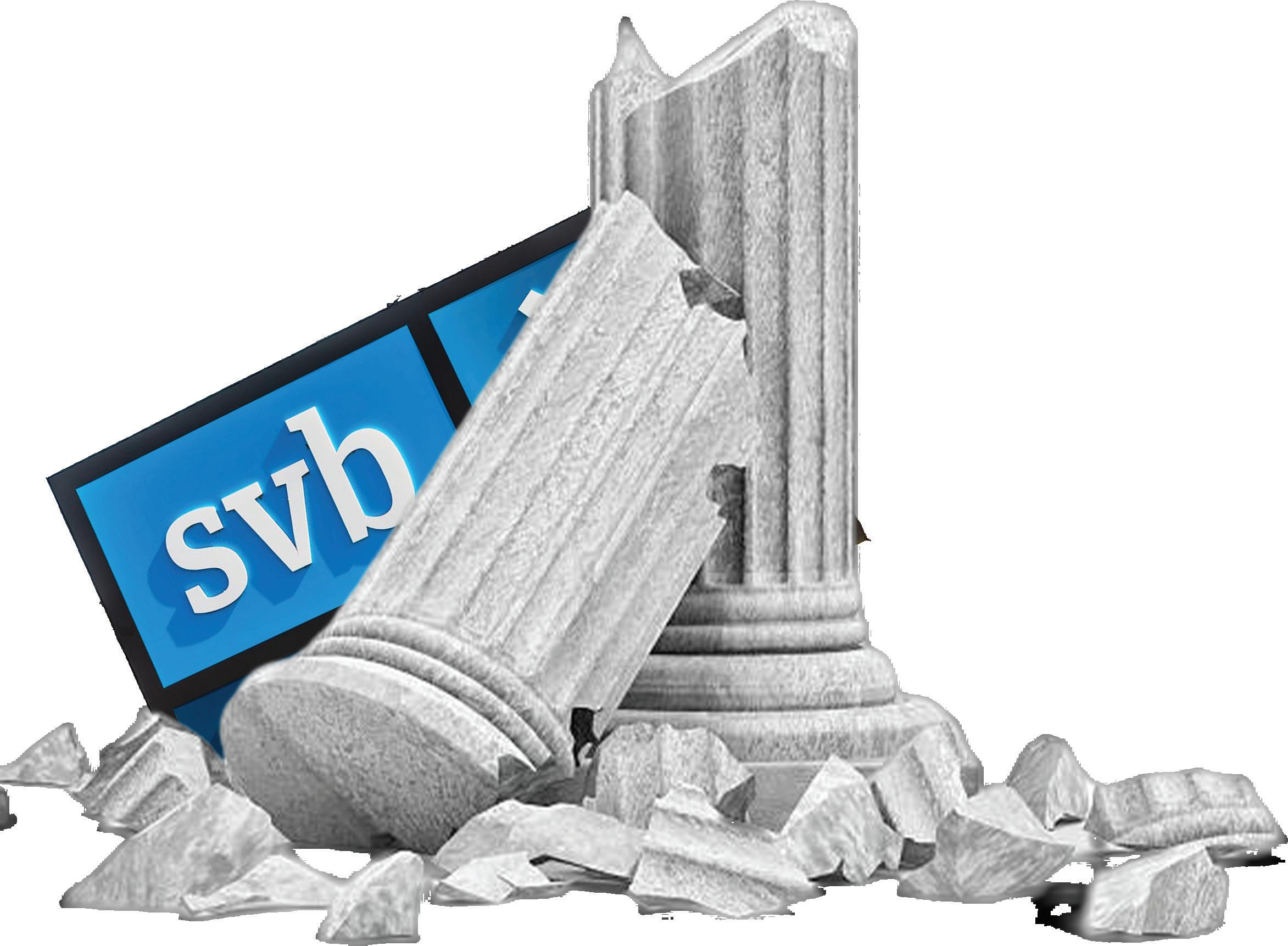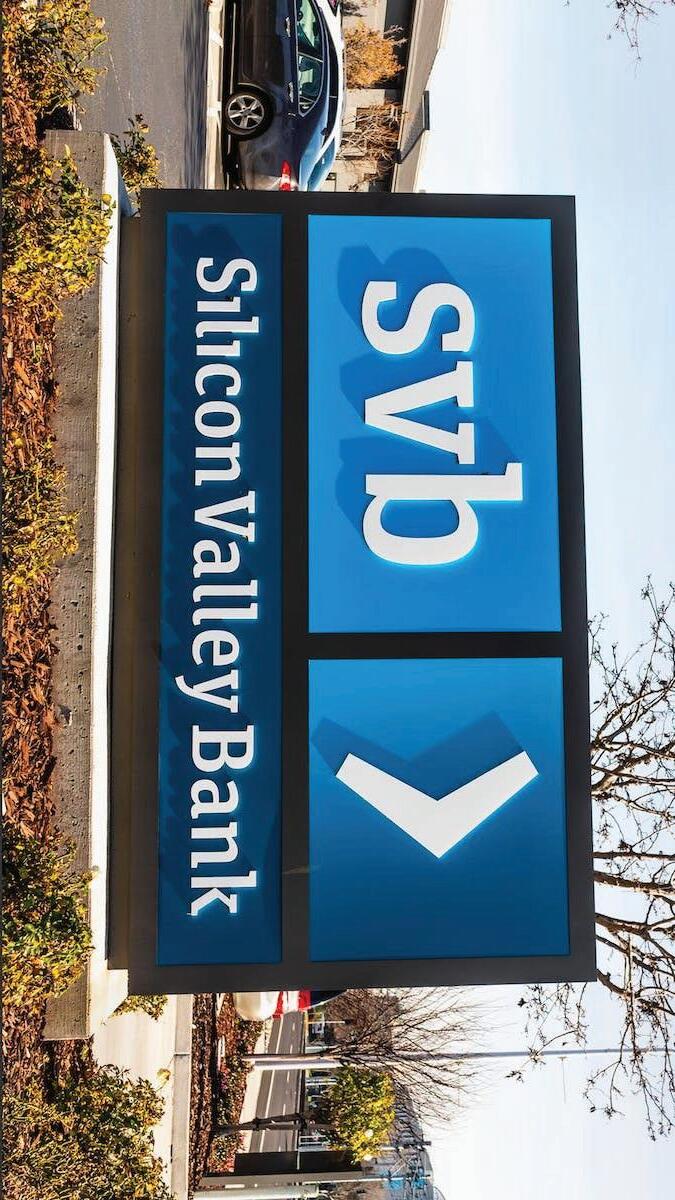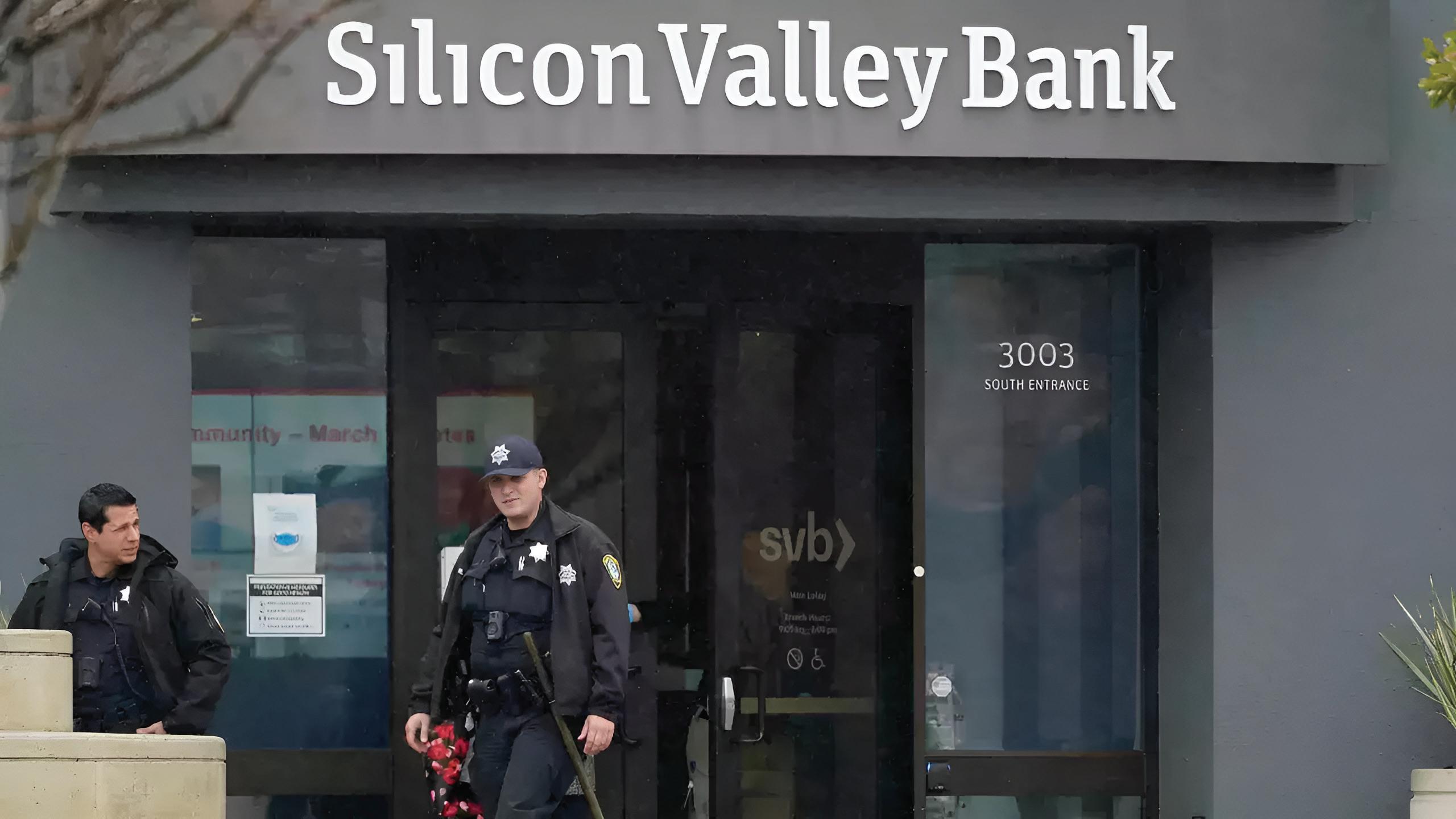
5 minute read
FEATURE OF THE MONTH TRUST FAILS WHEN
The Anatomy Of Bank Runs In America

Advertisement
rypto investments are highly risky, some risks are associated with traditional investments too but the safest way to keep your money is to put it in the bank.
This is what leading tech businesses thought while depositing their money in Silicon Valley Bank but somehow, the tides turned overnight.
CoinGabbar welcomes you to this month’s leading cover story that unfolds the tales of multiple bank runs and how trust failed in the land of the free. From Silvergate to Signature Bank, the states witnessed the biggest banking catastrophe since 2008 and this story will unveil the reasons why these banks came a cropper.
Why Does the Silicon Valley Bank Matter?
The fall of Silicon Valley Bank was one of the biggest collapses in American history only falling short of Washington Mutual Bank which was followed by the 2008 Financial Recession.

In 1983, Wells Fargo established the Silicon Valley Bank to provide specialized services to startup companies in the United States. With its unique value proposition and tailored offerings, the bank quickly became the largest by deposits in the Silicon Valley region and the top choice for over half of all venture-backed startups nationwide. By 2015, the SVB proudly announced that it was serving over 65% of all tech startups in the country, marking the beginning of its bold foray into the world of high-risk ventures with startup companies.
Last year, Silicon Valley Bank emerged as the 16th largest lender in the United States, boasting a total financing value of nearly $210 billion. Amid the pandemic, the stakes rose considerably for the bank, as its deposits surged by an impressive 100%, soaring from $62 billion to $124 billion. This unprecedented spike was attributed to the excess cash flow in the tech industry, which thrived in the virtual environment brought about by the pandemic.
As tech businesses continued to prosper, they directed a significant portion of their profits to Silicon Valley Bank, which aligned with their interests. While other industry leaders like JP Morgan witnessed a modest increase of only 24%, Silicon Valley Bank's impressive growth stood out.
What Happened To The Silicon Valley Bank?

Similar to other financial institutions, Silicon Valley Bank traditionally invested its customers' funds in a portfolio that predominantly comprised government and corporate bonds. These investments were perceived as relatively secure, providing a decent return for long-term investors. The security provided by government-backed securities and the ideal risk-reward ratio made bonds a preferred investment choice for SVB.
In recent months, inflation in the United States has been on the rise, prompting the Federal Reserve to take measures to curb its upward trend. The Fed has already initiated several interest rate hikes during its recent meetings and has indicated that it will continue to do so in the future, if necessary. This action is aimed at controlling the ongoing inflationary pressure in the country.
The interest rate hike had a direct impact on the value of the bonds that Silicon Valley Bank had heavily invested in. As a result, the prices of these bonds plummeted, leading to significant losses for the bank. Despite these losses, the bank continued to operate normally. However, the situation took a turn for the worse when some of the tech startups, who had deposited their funds with SVB, began to face a liquidity crunch. Consequently, these startups decided to withdraw their money from banks that did not have enough cash to liquate all the holdings.
The startup industry faced a challenging period of limited funding, exacerbated by the Federal Reserve's interest rate hikes. With loans off the table, many startups resorted to liquidating their holdings. Unfortunately, this led to Silicon Valley Bank having to sell a significant portion of its bond holdings, resulting in a loss of 1.8 billion dollars.
To make matters worse, Silicon Valley Bank could not access the funds necessary to meet its customers' demands. This news sparked panic among users, causing a surge in withdrawal requests. The effects of the panic were evident as the bank's share price plummeted by 60 percent in a single day, and Moody responded by downgrading the bank's overall rating.
The situation quickly spiraled out of control as the panic intensified, ultimately leading to a bank run at Silicon Valley Bank.
Silvergate and Signature Bank - Different Stories, Same Climax

The decline of Silvergate Bank began with the collapse of FTX, which triggered a bank run and caused the premature sale of the bank’s long-term investments such as bonds at a loss of $1 billion. Despite the bank's efforts to mitigate the losses, the Justice Department's interest in the bank's transactions with FTX and Alameda on the SEN network added to their troubles. Silvergate had no option left but to start liquidating its holdings which would have further losses to the bank. Apart from that, the political pressure continued to mount, and eventually, the Federal Home Loan Bank of San Francisco demanded the repayment of its $4.3 billion loan, which sparked controversy. The delayed annual report of Silvergate Bank caused clients to lose confidence in the bank, leading to the demise of its SEN network and ultimately the liquidation of Silvergate.


On the other hand, New York's Department of Financial Services closed Signature Bank, a regional bank that had previously focused on digital assets, due to concerns about the bank's impact on the stability of the financial system. This marked the third regional bank collapse in a matter of weeks, following the failures of Silvergate Bank and Silicon Valley Bank.

The main reason behind the fall of Signature Bank was the continued fear of uninsured deposits and its exposure to the crypto sector. The Signature Bank decided to diversify its portfolio and limit the crypto deposits after the FTX collapse but this could not stop the outflow of money through customer withdrawals. As a result of which, the NYFS had to force close the banking operation of Signature Bank and assure their customers that all of their funds are safe.
What Will Happen to the Customers?
While addressing the concerns of the customers and stakeholders of the SVB and Signature Bank, the President of the United State, Mr. Joe Biden assured that all the customers are completely protected even after the two consecutive failures in the industry. He said,
“First, all customers who had deposits in these banks can rest assured — I want to — rest assured they’ll be protected and they’ll have access to their money as of today. That includes small businesses across the country that banked there and need to make payroll, pay their bills, and stay open for business.
No losses will be — and I want — this is an important point — no losses will be borne by the taxpayers. Let me repeat that: No losses will be borne by the taxpayers. Instead, the money will come from the fees that banks pay into the Deposit Insurance Fund.”
However, the President also informed that the upper management of these banks will no longer work there and none of the investors in the banks would be protected as their investment did not turn out as expected.
The Way Forward
Trust in the American economy is significantly low amidst times of global financial challenges. The repeated collapse of banks in an economy that boasts of being the most stable in the world questions the credibility of the institution in declaring it, especially platforms like Forbes which is infamous for listing future defaulters in its exclusive lists.
Whatever the case, the falls of these banking giants made it explicitly known that the future belongs less to trustful centralized organizations that do not have the real money to pay to ones who truly own it but to a decentralized technology that stands for responsible ownership of one’s assets.










